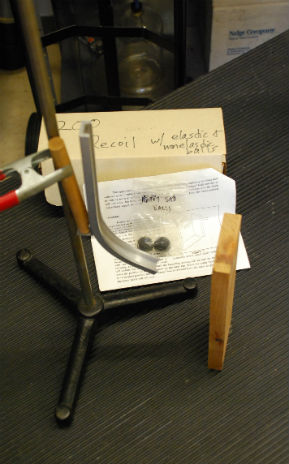
Momentum - Elastic vs. Inelastic Collision

There are two balls, one "happy" (demonstrates a good elastic collision) one "sad" (approximately demonstrates an inelastic collision). There is a height on the ramp where the "sad" ball will not knock the board over after rolling down, but the "happy" ball will. This shows that the block obtains a larger final velocity in an elastic collision than in an inelastic collision.